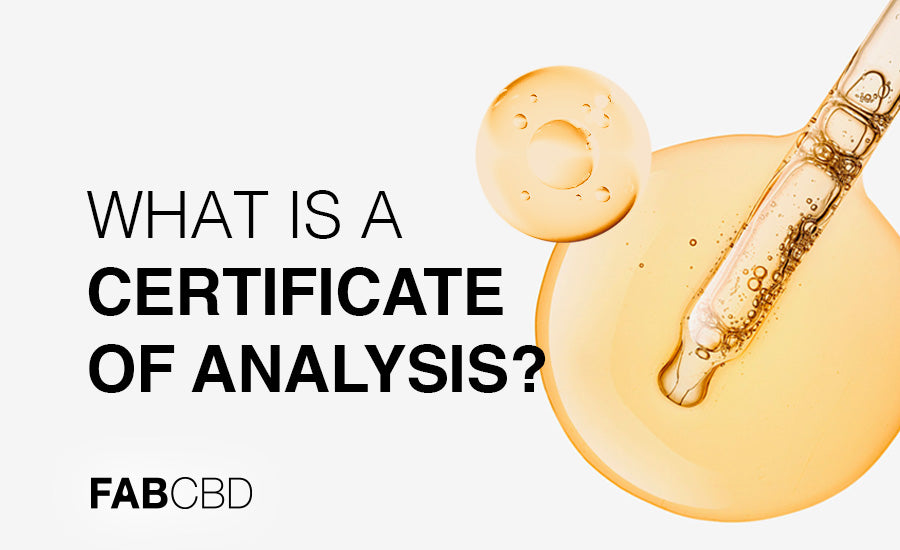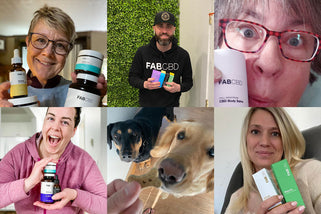CBD products have exploded in popularity lately. However, how do you know if your CBD product is reliable or not?
With limited FDA oversight, untrustworthy manufacturers may cut corners, allowing contaminants into their products.
That's where certificates of analysis come in. Let's find out what they are and how they can help you ensure you're getting CBD products made with high-quality standards.
What is a CBD Certificate of Analysis?
A Certificate of Analysis, often referred to as a COA, acts as a third-party lab report, offering customers and distributors a detailed look at the chemical composition of a CBD product. With a COA, manufacturers can prove to their customers that their CBD offerings are safe, effective, and of the highest quality.
Embedded within each COA is a unique batch number, acting as an identifier for every product's journey from creation to consumption.
CBD products from unreliable manufacturers can contain harmful substances such as pesticides, heavy metals, and solvents. Certificates of analysis use multiple testing methods to help manufacturers verify that their CBD products meet their quality control and regulatory standards, allowing them to keep a close eye on the final product being produced and ensure it meets customer needs and is safe for consumption.
It also assures you as a customer of the product quality since you have a scientific test determining everything you need to know about the product.
Finally, it helps maintain good quality management since any issues would appear in the COA.
What Does a Certificate of Analysis Test For?
Here are the main things a COA tests for:
Cannabinoid Profile
A COA precisely determines the types of cannabinoids present in the product and their weight percentage. Since different cannabinoids offer various effects and potential benefits*, the cannabinoid profile can guide you between different types of CBD products and make informed decisions about the product's potential effects.
Cannabinoid Concentration
A COA will also tell you the concentration of cannabinoids, meaning you'll know exactly how much CBD is packed into every milliliter or gram of the product to ensure it conforms to the customer's requirements. This lets you measure precisely how much CBD you consume with every product.
Elemental Analysis
Elemental analysis screens for heavy metals like lead, mercury, and arsenic. With this assurance, you can consume or inhale deeply and enjoy CBD without unwelcome heavy metal hitchhikers.
Microbiological Contaminants
A COA also screens for yeast, mold, and other microbial contaminants that may be found in low-quality products, ensuring that your products don't have microbiological contamination.
Pesticide Analysis
Pesticide analysis ensures your CBD product is free from harmful chemicals and pesticides often used in low-quality crops. Remember: anything you spray on a hemp plant will show up in a hemp extract – from which CBD is extracted. This analysis ensures that the cannabis plants used to make the product were grown without harmful pesticides and ensures there are no issues with the raw materials.
Terpene Profile
Terpenes, the aromatic compounds responsible for the scents and potential benefits* of CBD, are a big part of your COA, allowing you to appreciate the additional dimensions that terpenes bring to your CBD experience and select your favorite taste and experience.
Here is an example of an actual COA for Fab CBD's CBD oil:

How to Read a Certificate of Analysis
Now that you understand what COAs test for, it's time to learn how to read them. Here's a simple guide to help you navigate through the details:
Locate the COA
Find the COA for the product you're interested in. It's often available on the product's website or by request. You may need to identify the lot number of your product and the product name to find the right COA. Some vaping and food products use a QR code with everything you need to find the COA.
Understand the Sections
COAs are divided into sections that detail different aspects of the product. These usually include cannabinoid profile, concentration, elemental analysis, microbiological contaminants, pesticide analysis, and terpene profile. Use the previous section to guide you through each item.
Check the Numbers
As you review each section, check the numbers against industry standards and regulations. Ensure that cannabinoid concentrations match the advertised potency and that safety sections have values below safety limits.
Lastly, remember to look at the expiry date!
Fab CBD Products are Third-Party Lab Tested and Approved
As we've seen, a COA can give you quality assurance, letting you know you're investing in a high-quality CBD product. That's why, at Fab CBD, we use third-party lab tests from ProVerde, an ISO 17025-accredited laboratory that offers the most reliable results in the industry.
Now that you know how to read a COA, check out our Lab Reports and see the test results that show you exactly what's in our products so you can choose the best one for you.
*This statement has not been evaluated by the Food and Drug Administration (FDA). This product is not intended to diagnose, treat, cure, or prevent any disease.







